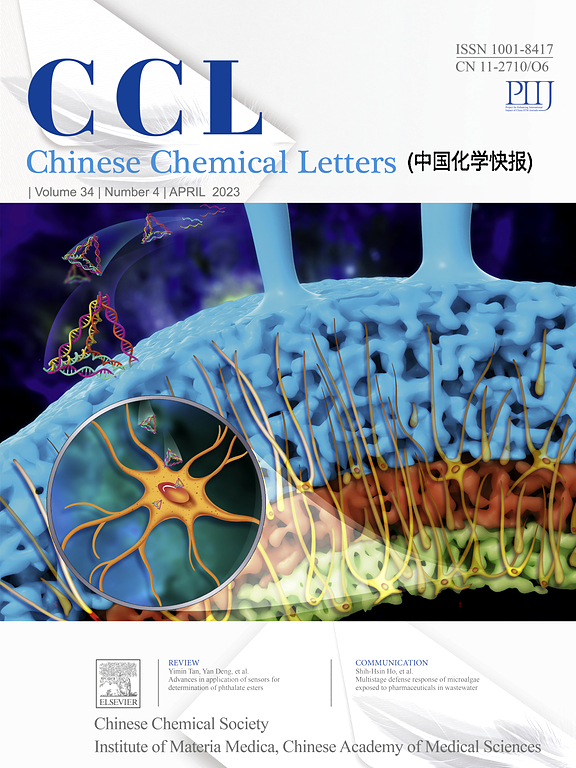染料稳定原子精确铜簇增强光催化析氢
IF 8.9
1区 化学
Q1 CHEMISTRY, MULTIDISCIPLINARY
引用次数: 0
摘要
具有明确原子结构的金属纳米团簇由于其亚纳米尺寸和可调的有机-无机杂化结构特征,在催化领域具有重要的应用前景。本文中,我们成功地合成了一个11核铜(I)-炔基纳米簇(Cu11),该簇由光敏罗丹明染料分子衍生的炔基配体稳定。值得注意的是,即使在没有介质和贵金属助催化剂的情况下,该Cu11簇也表现出优异的光催化析氢活性(8.13 mmol g−1h−1)。此外,当将Cu11簇加载到TiO2纳米片表面时,所得Cu11@TiO2纳米复合材料的析氢效率显著提高,是纯TiO2纳米片的60倍。Cu11@TiO2中Cu11簇的掺入有效抑制了光生电子和空穴的复合,从而加速了复合材料中电荷的分离和迁移。本研究为设计高活性铜簇基光催化剂提供了新的思路。本文章由计算机程序翻译,如有差异,请以英文原文为准。

Dye-stabilized atomically precise copper clusters for enhanced photocatalytic hydrogen evolution
Metal nanoclusters with well-defined atomic structures offer significant promise in the field of catalysis due to their sub-nanometer size and tunable organic-inorganic hybrid structural features. Herein, we successfully synthesized an 11-core copper(I)-alkynyl nanocluster (Cu11), which is stabilized by alkynyl ligands derived from a photosensitive rhodamine dye molecule. Notably, this Cu11 cluster exhibited excellent photocatalytic hydrogen evolution activity (8.13 mmol g−1h−1) even in the absence of a mediator and noble metal co-catalyst. Furthermore, when Cu11 clusters were loaded onto the surface of TiO2 nanosheets, the resultant Cu11@TiO2 nanocomposites exhibited a significant enhancement in hydrogen evolution efficiency, which is 60 times higher than that of pure TiO2 nanosheets. The incorporation of Cu11 clusters within the Cu11@TiO2 effectively inhibits the recombination of photogenerated electrons and holes, thereby accelerating the charge separation and migration in the composite material. This work introduces a novel perspective for designing highly active copper cluster-based photocatalysts.
求助全文
通过发布文献求助,成功后即可免费获取论文全文。
去求助
来源期刊

Chinese Chemical Letters
化学-化学综合
CiteScore
14.10
自引率
15.40%
发文量
8969
审稿时长
1.6 months
期刊介绍:
Chinese Chemical Letters (CCL) (ISSN 1001-8417) was founded in July 1990. The journal publishes preliminary accounts in the whole field of chemistry, including inorganic chemistry, organic chemistry, analytical chemistry, physical chemistry, polymer chemistry, applied chemistry, etc.Chinese Chemical Letters does not accept articles previously published or scheduled to be published. To verify originality, your article may be checked by the originality detection service CrossCheck.
 求助内容:
求助内容: 应助结果提醒方式:
应助结果提醒方式:


